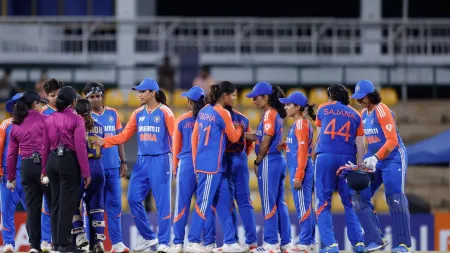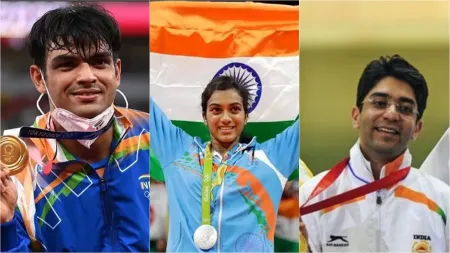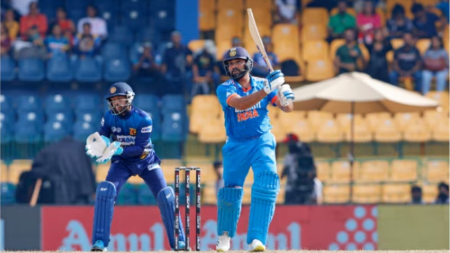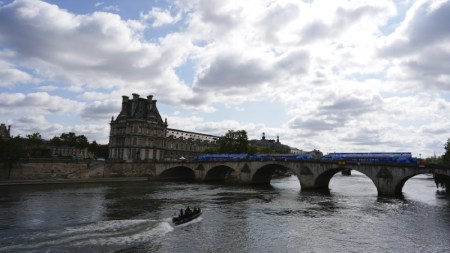Paris Olympics: Rajeshwari Kumari a better trap shooter after two-year work with vision coach
In her list of demands to the Sports Authority of India (SAI), Rajeshwari Kumari, ranked ninth in the world in women’s trap shooting, made a curious entry. She asked for an eye and vision coach – a request that was met by SAI since the National Rifle Association of India did not have a coach with similar qualities. But why did a shooter require an ‘eye coach’?
Tomas Pospichal describes his contribution as a necessity for elite athletes to reprogramme their vision in accordance with their sport. His practice started when he worked with Czech Republic’s David Kostelecky, a gold medallist at the Beijing Olympics and a silver medallist at the Tokyo Games. Kostelecky is now coaching Rajeshwari and Pospichal was roped into the team.

“I started working with David Kostelecky two years before the Tokyo Olympics. In 2022, we started working with Rajeshwari. When it comes to trap shooting, your eyes need to be able to track a moving target in a large landscape and that requires multi-dimensional vision. In order for this to be successfully achieved, we start finding problems in the vision systems and try to improve it for the brain to register the target in the air,” says Pospichal.
The Czech optometrist started his programme for athletes in 2019. Initially it was just Kostelecky but now he works with the Czech and Slovak Olympic teams, National Hockey League (NHL) players in North America take his help – even former light-heavyweight UFC champion Jiri Prochazka has employed him to work on his vision.
Pospichal says that when Rajeshwari came to him, the results from her eye tests were not the best. But that is a common issue now amongst athletes, especially those who are on phones and computers. Staring at a screen at close range for a while leads to weakening of the muscles around the eye. This leads to delayed reaction from the brain to a moving target – a fatal flaw in trap shooting.
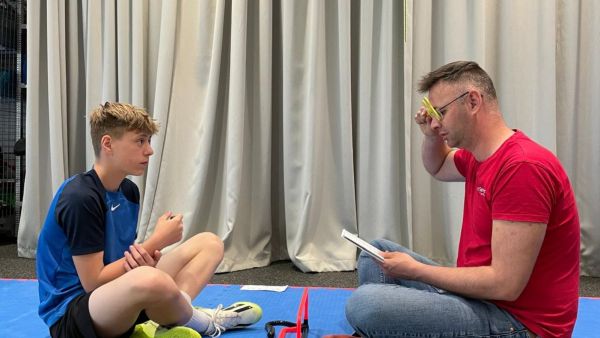 Tomas Pospichal is an eye vision coach who works with elite athletes across multiple sports.
Tomas Pospichal is an eye vision coach who works with elite athletes across multiple sports.
The fix, according to Pospichal, is eye exercises for a short duration every day, akin to going to the gym. It’s an incremental change but vital for elite athletes heavily reliant on their vision.
“We try to improve the eye muscles in order for athletes to see properly. After that, we try to improve their cognitive response and reaction to interact with their environment. Then we try to tailor it to their sport. We first make diagnostics to see how the eye muscles work. After that, we make individual training plans for each athlete to improve the areas we feel are weak,” said Pospichal.
Crucial to medal hopes
At the Tokyo Olympics, India’s trap or skeet shooting teams didn’t have any women. At Paris though, India will see full participation in both of the women’s shotgun events with one each on the men’s side. An Indian will be taking part in every shooting discipline at the Paris Games – but higher numbers don’t necessarily translate into medals. Most Indians were only able to gain a quota after top shooters from China, Korea and Germany had already done so. But there is certainly an attempt to upscale and close the gap by focusing on smaller variables.
Different athletes get different programmes. For someone like Prochazka, improving peripheral vision, as well as his vision under pressure of being hit, was a big issue. For Rajeshwari, the requirements are different.
Pospichal believes Rajeshwari’s eye scores have improved by almost 30 percent since they started working together. These scores are largely based on the speed and accuracy levels at which the eye captures a moving target. Tailored exercises go a long way in improving this facet.
In Rajeshwari’s case, the exercises are largely based on training her eye to look for things farther away and focus on certain targets well out of her range. They take just a little time every day but done consistently, can lead to incremental changes.
The consistent work for improving her vision has resulted in Rajeshwari’s eye speed being around 88 percent and her accuracy at 77 percent. “According to our tests, when your accuracy is above 70 percent, you’re usually ready for the biggest tests as an athlete. In two years of tough work, she really improved and it’s great to see her ready for Paris,” said her optometrist.
Disclaimer: The copyright of this article belongs to the original author. Reposting this article is solely for the purpose of information dissemination and does not constitute any investment advice. If there is any infringement, please contact us immediately. We will make corrections or deletions as necessary. Thank you.
